From the outside, Tracy Gallagher’s white van is identical to thousands of similar models transporting delivery drivers and tradespeople up and down the country. Inside, however, it’s a world apart.
It opens into a miniature wood cabin, complete with a raised bed shrouded in lace netting, with storage and a fridge underneath, a rustic wood kitchen with a Mexican-tiled splashback, and hanging copper kitchenware over a gas hob. There’s a hammock seat suspended from the ceiling and even a cheese plant in a hanging basket. It’s an Instagram dream.
Gallagher is part of Ireland’s growing population of self-build campervan owners. Caravanning and camping is still popular with the retirement community, but growing numbers of millennials and young families are getting on board, especially since the pandemic.
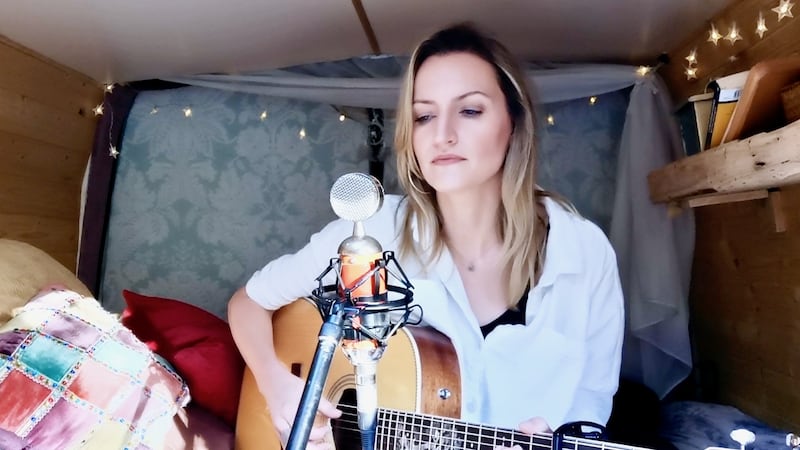
Gallagher was ahead of the trend. A full-time musician, she renovated the van in 2018 with the help of a friend. Then in her early 30s, “I was living in shared accommodation and all of my friends were buying houses and settling down and I was starting to wonder was I ever going to have my own space. I had a dream of living by the beach. But that just wasn’t feasible with where I was financially at the time. So I came across somebody on YouTube and started watching van life videos, and I got it into my head that’s what I wanted to do,” she says.
“People thought I was crazy. They were like, you don’t even know how to use a hammer.”
Undeterred, she sourced a 2008 Renault Master with 240,000km on the clock for €2,700. Together with her friend Enda Reid, they set themselves a budget of €5,000 and a target of renovating it in three months. The most expensive part of the renovation was spray foam insulation, which she ranks – along with a really good mattress and her portable chemical toilet – as among her best investments, because it means the van can be used in winter.
Since then, “Mags” – the campervan community has a penchant for naming their vans – has taken the full-time musician to work at weddings all over the country and on trips to France and the United Kingdom. She tends to camp wild for two or three nights and then books herself into a service campsite. “What I’ve done a few times, which is a bit luxurious, is go to a spa for the day.”
Owning a van, “the freedom is indescribable. If something happened to the van, in a heartbeat, I’d get another one.”
She calculates that she uses it at least 40 nights a year and it doubles up as a spare bedroom when she has visitors to stay at her Dublin home. Reid enjoyed the experience so much that he went on to set up his own business, Oldboy Campers, and is now on his 15th van conversion and booked up until the end of 2022.
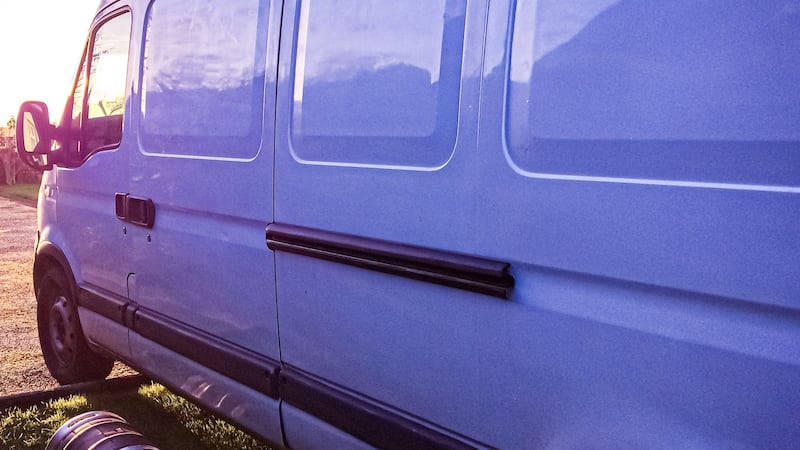
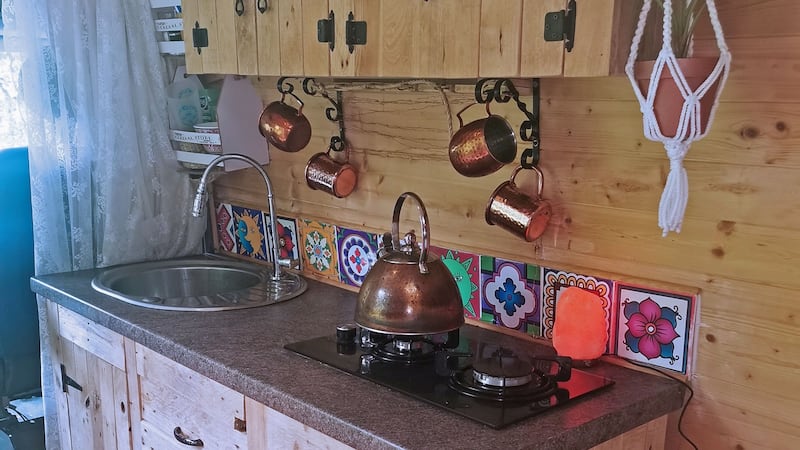

Data from the National Vehicle and Driver File, a database of all 2.5 million vehicles in the country, shows the number of campervans in the country rose from about 11,200 in 2018 to almost 12,600 in April 2020 and had reached 13,700 by October of that year.
In the Dáil last October, Minister for Finance Paschal Donohoe said “increased demand for motorhomes and campervan registration requests” was contributing to delays in Revenue providing VRT quotes to drivers, but that backlog had been fully cleared by February.
Meanwhile, the Facebook group Self Build Campervans Ireland has 10,700 members, though there’s no way of knowing how many of them are actively converting a campervan.
Dave Hanley, who has been renting out and converting campervans at Vanderlust in Ennistymon, Co Clare, since 2007, says the market for commercial vans professionally converted into campers is also booming. “It’s the whole explosion on social media, van life, everyone looking at YouTube videos and on Instagram, with their nice shiny interiors and their beach lifestyles.”
It is “lovely, but you have to be realistic. It’s not for everyone”. You need to be prepared for a “less is more” approach to packing and creature comforts, he says.
Hanley converts about 60 vans a year at an average spend of €20,000 to €25,000 on top of the cost of the van, which he can help source. Once converted, the van has to be re-registered at 13.3 per cent of its new post-conversion market value, which can add considerably to the cost. “Most people will spend, by the time all is said and done, €45,000 to €50,000.”
Good investment
On the upside, campervans are holding their value, with people selling them back to dealers two or three years later for close to the price they paid. Meanwhile, motor tax on camper vans is €102, regardless of vehicle size, and insurers will generally look at them as a second vehicle, so insurance can be as low as €330. “They’re certainly a good investment if you’re using it,” says Hanley. “But there’s no point having something monstrous sat in your drive for 11 months of the year if you never go anywhere.”
One of the trends he has observed over the past couple of years is that smaller vans are becoming more popular. “People are downsizing. They all started with massive six-berth vans. Now they’re going for more compact vans that allow you to go to nicer places and travel a bit more.” Navigating the Burren in a six-berth motorhome could be tricky, he says, “unless you’re a bus driver”.
The advice offered by Brian and Nora Lacey, who convert commercial Volkswagen vans into bespoke campervans at their Wexford-based business Happy Campers, is to treat your campervan like a second car. “It’s a lot of money to spend on a vehicle to have it sitting up there, except for four or five weeks of the year,” says Brian who started the business as a hobby a decade ago with his brothers. It now employs five people.
Prices for a two-berth conversion start from €10,500 at Happy Campers, with the customer providing the van. At the other end of the scale, they have just completed a conversion of a brand new van to the customer’s specification which “will be on the road for €51,000”. But in 10 years, “that campervan will have a minimum value of €30,000 to €35,000”.
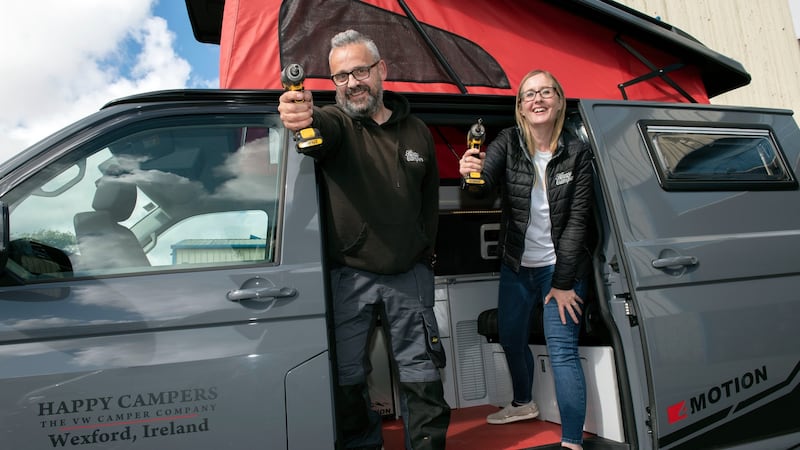
The good news is that it’s fast: a conversion without an elevated roof can be done in about five days; for one with an elevated roof, it takes eight to 10 working days. But the bad news is that Happy Campers is now booked up until almost the end of the year.
And if you want to buy a second-hand purpose-built motorhome straight from a dealer, you’ll also have to wait. Business is “crazy. We can’t get vans to keep up with it. We’ve never seen the likes of it. The whole industry is waiting on new stock,” says Pat Horan, one of Ireland’s longest established dealers in campervans.
He has been selling them in Borrisokane, Co Tipperary, for 40 years. Since the pandemic began, he has started trying to source them from Europe to keep up with demand. But increased demand and raw material shortages due to Brexit, the pandemic and other factors means prices have gone up, too. A few years ago, you could start off with a budget of €10,000 to €15,000. That would hardly get you something from the scrapyard now, he says. “Even to go €10,000 more, you’re at the bottom of the barrel.”
The retirement community have traditionally been the main market, but now families are also looking to spend their lockdown savings. “For the past 15 months, people haven’t been at the pub, they haven’t been at restaurants, they haven’t been on foreign holidays. There’s a good bit of surplus money out there at the moment. Last month, we sold seven campers in a week, and three of those customers bought those campers over the phone. They hadn’t met us, they hadn’t seen the camper, and they sent us on the money before they collected it. If someone said that to me two years ago, I’d have said go away and get the white coats.” But, he adds, it’s a safe investment: he is currently buying them back from customers two or three years on for the price they paid for it.
Safety aspects
Horan also runs a parts business for people doing their own conversions and business is booming. But he worries about the safety aspects of some of the work being done. “That’s the negative side of the pile of home conversions going on. I’m scared of what’s going to happen there. Ireland is not as well regulated as the rest of Europe. We’ve seen some horror stories here where people have been fitting gas appliances themselves. It terrifies me that there might be some big explosion some night in a campsite.”
The other thing Ireland doesn’t do well is support facilities for motorhomes. “Ireland is awful. We have Third-World facilities; in fact, we have none,” says Hanley. “What’s upsetting is the fact that all of this money is being spent on advertising what we have, which is an amazing island. And then people rock up [in a campervan], and they’re told to bugger off.”
He has researched the cost of basic facilities which allow you to empty waste and refill your water, and reckons they cost as little as €3,000. “The county councils would make money out of it. It’s a no-brainer.”
Martin Gaughan, a television director in his 20s, has been chronicling his campervan conversion – and his adventures in the timber yard – on Instagram (@theboujway.) In the early weeks of the first lockdown, he sat down with his boyfriend to plan a 27-country roadtrip. As the plans advanced, it became apparent they were going to need a camper to do it. He bought a 2015 Vauxhall Movano for about €7,500, and then spent months researching how to convert it. The total conversion cost is going to come in at about €7,500, though he says his spend on building materials “is on the high end”.
It’s clear from Gaughan’s Instagram stories that he has put a lot of thought into the design: from the Scandinavian-style birch plywood cladding and the box-shower that hides under the sink, to the pull-down screen for movie afternoons. “There’s a million and one ways you can go about designing a van and it’s all about what you want.”
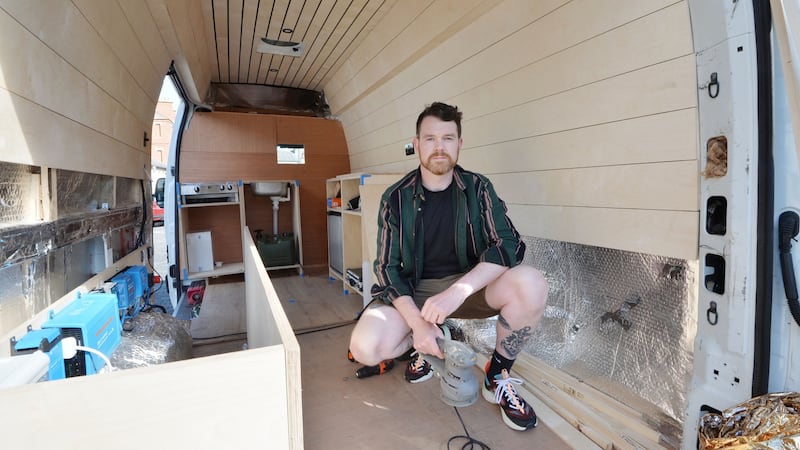
In his case, a lot of the decisions were driven by the roadtrip. Since they want to take in part of the Arctic circle, he invested in a very good heating system and insulation. “It’s so overwhelming at the beginning, but you can just look at it in stages: find a van, design, layout, insulation, electrics, furniture and the finish.”
He launched himself into it nine weeks ago. “I knew I was off work for a month. There were 16-hour days for more than 30 days straight. It was so relentless and painful, I’m still reeling. But you can make huge savings if you decide to really tackle it yourself. There’s a huge sense of satisfaction.”
He did most of the work – other than the electrics – himself and was also able to draw on the help of family and friends, especially his dad. “My dad is so crafty with his hands, part of the reason why I wanted to do [it] was to almost emulate how my dad would turn his hand to anything. And I knew I’d have him there as a fallback.”
It’s now 90 per cent done, “but I’m afraid I’ll be saying it’s 90 per cent done for another year. You are building a house on four wheels that has to have all the functionality of everything you have in your house.”
The conversion project was born out of an ambitious travel plan but for his first trip, he’s planning something a little closer to home. He is looking forward to taking the van to Phoenix Park, where he’s going to park up for a day and look out at the deer while he works. And his first overnight will be at the Mayo Dark Sky Park, an area spanning 150km, near where he grew up, that is recognised as one of the best places in the world to view the night sky.
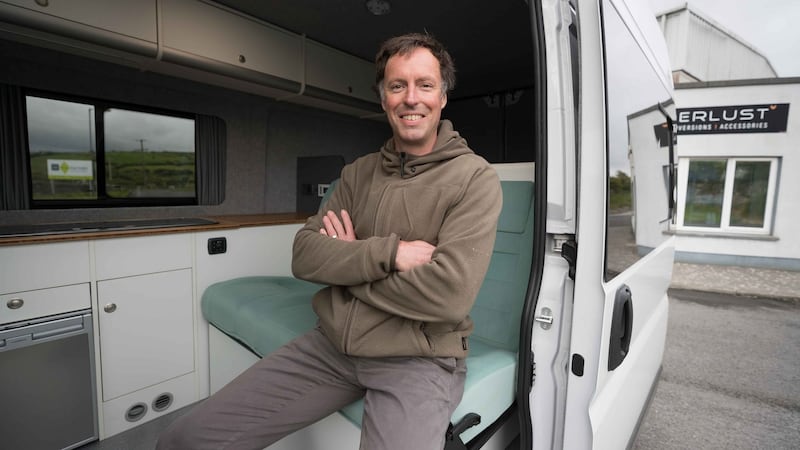
Man the Van: Tips from the experts
1 It's not for everyone, so if you can, try before you buy. Vanderlust still has about 12 weeks' availability in its fleet of vans this summer. Prices start from €1,000 a week for a two-berth VW transporter and go up to €1,500 a week for bigger vans that can sleep five.
2 Buy from a registered dealer, says Pat Horan. "If we can't guarantee it, we won't take it. We would have seen 10 at least this year that we wouldn't let into the yard, and they're gone the next week on Done Deal."
3 If you're planning to self-build, do your research. There's a wealth of online resources, including YouTube videos and Facebook groups, and lots of people willing to help and advise. "I probably spent a year researching, really going down the internet rabbit hole. There's such a wealth of information out there online," says Martin Gaughan.
4 Don't forget to budget for VRT if you're doing a conversion, says Brian Lacey. "There's three things you have to keep in mind" when you're budgeting for a campervan. "One is the cost of the van. Then there's the cost of the conversion. Then there's the VRT," which is 13.3 per cent of the open market selling price, as defined by Revenue. As a rule of thumb, for a brand new four-berth campervan, that's a VRT of about €6,000 to €6,500.












